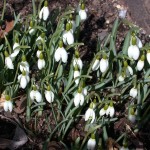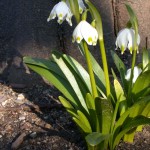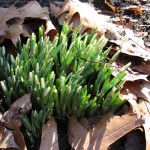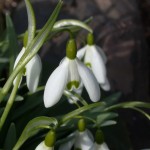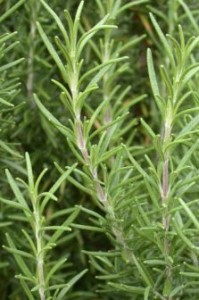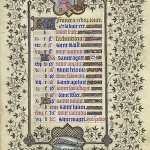Snowdrop and Snowflake
Left:??The snowdrops (Galanthus nivalis) under the quince trees in Bonnefont Cloister bloom from February to March, while snowdrops in warmer climates may flower as early as January; right: the closely related spring snowflake (Leucojum vernum) blooms from March to May.
The winter-blooming snowdrop and spring snowflake appear so closely related that the great sixteenth-century herbalist John Gerard named them the Early Blooming Bulbous Violet and the Late Blooming Bulbous Violet. Read more »

